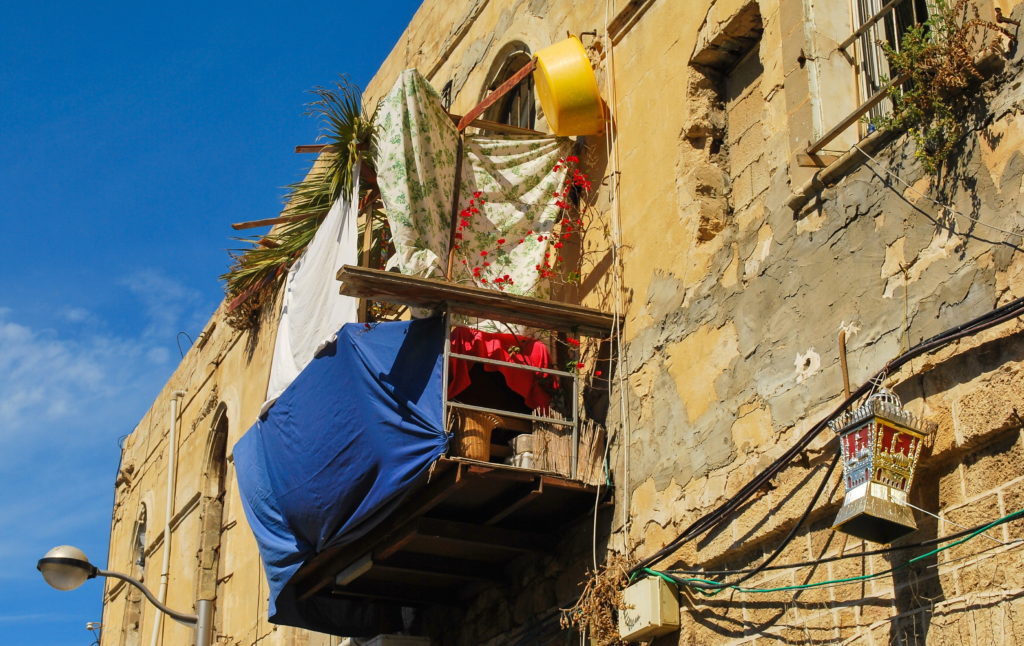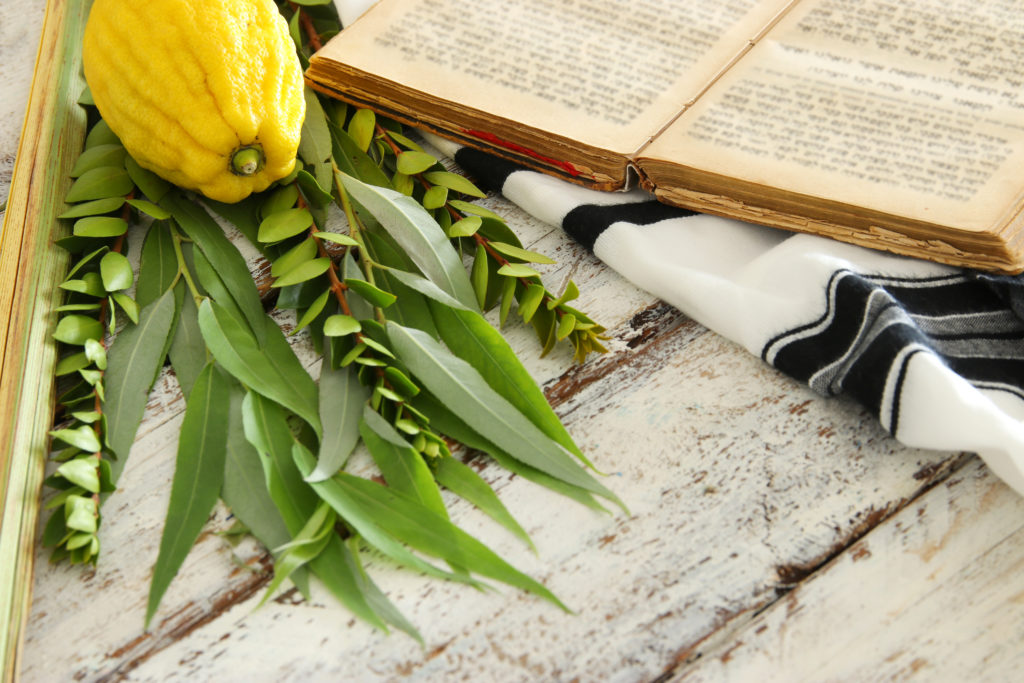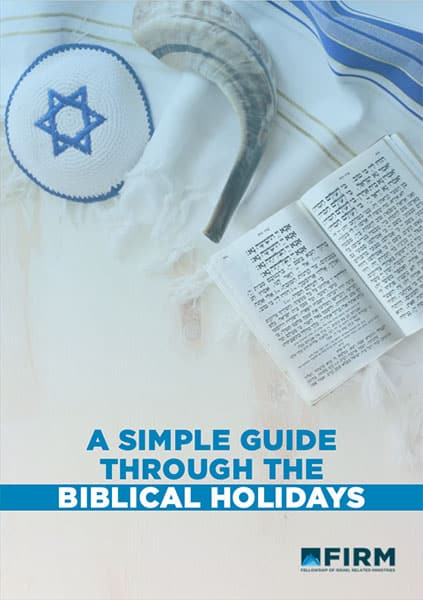The Feast of Tabernacles or Sukkot
The most festive season of the year in Israel continues! We are approaching Sukkot, also known as the Festival of Booths or Feast of Tabernacles, which lasts an entire week. Preparations for this big holiday are already way underway!
In Israel, the Jewish people usually start building booths already around Rosh HaShanah. Sukkot celebrates the earth’s harvest (Deuteronomy 6:13-15) and it is a time to thank God for His blessings. But more importantly, Sukkot commemorates Israel’s deliverance from Egypt, as described in Leviticus 23:34-44.
What is The Feast of Tabernacles?
Sukkot is just as fun as it is profound. The tell-tale sign that the holiday is underway are the booths that one can spot outside Jewish homes that they are building for the seven days of the holiday. Each temporary dwelling is called a “sukkah” in Hebrew, hence the festival’s Hebrew name (plural of sukkah): Sukkot!
People traditionally decorate these temporary dwellings with harvest fruits, lights, and lots of color. They “dwell” in them for seven days just as the Lord commanded, to commemorate their time in the wilderness.
Jesus and the Feast of Tabernacles
This season is meant for the Israelites to recall the 40 years that their ancestors spent in the wilderness living in temporary shelters. Apostle John, in his gospel, actually references Sukkot with the birth of the Messiah in his introduction.
The Feast of Tabernacles is in the Bible–even in the New Testament. If you read closely and know what to look for you can see John dropping a verbal tally in verse 14 of his opening chapter.
Observing the Feast of Tabernacles: Seven Days in Booths
God led His people through the desert, protected them, provided for them and healed them. Wandering in the desert, the Hebrews camped along the way, that is why God commanded Israel to build and live in temporary “dwellings” for a week at this time of year. The booths or tents are also a symbol of the fact that we are sojourners on earth.
God told Moses to share with the people the following commandment:
Celebrate this as a festival to the Lord for seven days each year. This is to be a lasting ordinance for the generations to come; celebrate it in the seventh month. Live in temporary shelters for seven days: All native-born Israelites are to live in such shelters so your descendants will know that I had the Israelites live in temporary shelters when I brought them out of Egypt. I am the Lord your God.’ Leviticus 23:41-43
How the Feast of Tabernacles is Observed in Israel Today
It is common for Israelis to share gifts and food baskets with their friends and family during the Feast of Tabernacles, similarly to the western harvest festivals, including Thanksgiving.

Four Spices at Sukkot: A Plant Bouquet
During Sukkot, the Jewish people prepare a special bouquet of four plants to wave before the Lord. It is called a Lulav and each element holds a very symbolic meaning. In the right hand we should have one palm branch, two willow branches and three myrtle branches. In our left hand we hold an Etrog (citrus fruit).
On the first day you are to take branches from luxuriant trees—from palms, willows and other leafy trees—and rejoice before the Lord your God for seven days. Leviticus 23:40
The sages of Israel saw in this bouquet a symbol of the nation’s unity. Additionally, Christian scholars saw in these four plants parallels to Jesus’ parable of the sower and the four types of soil (Matthew 13:3-9).
The Citrus Fruit
The noble citrus fruit, which has a strong fragrance and distinct taste, represents Israelites who carry the pleasant scent of the Torah and fulfill it – which means, they listen to the Word and live it out.
Palm and Myrtle
The palm branch has no smell, but palms bear a sweet fruit – dates. It represents those who do not know the Torah but strive to live well, thus honor the Scriptures without knowing them. The myrtle on the other hand has a very pleasant scent but does not bear any edible fruit. It is like those who know God’s Word but do not live according to it.
Branch of Willow
Finally, the willow, which gives neither a pleasant smell nor fruit, symbolizes those who do not know the Torah, and have not made any attempts to live their lives in a worthy and good manner.
The Meaning of the Feast of Tabernacles
Waving the full bouquet, the Jewish people plead before God, “Lord, take us all as we are,” and at the same time proclaim the unity of all Israel, by faith. Through God’s Word, we know that He indeed receives us as we are, but He has no intention to let us remain the same. He is faithful to teach us, transform us and help us grow.
The message of the Feast of Tabernacles is also about the future – the second coming of Messiah, which will be a joyous day for those who know Him. When the Messiah comes, He will collect the harvest for the Father’s Kingdom.
In the Jewish synagogues, people often read from the Book of Zechariah, especially chapter 14 that foreshadows the return of the Messiah and His saints. It speaks of the Messiah’s reign, God’s exaltation of Jerusalem, overcoming Israel’s enemies, and all nations pilgrimaging to God’s Holy City for Sukkot.
Israel and the Nations at the Feast of Tabernacles
During the Festival of Booths, the Jewish people also pray for other nations, inviting them to come to Jerusalem to celebrate together, since God already commanded Moses and the Hebrews to include the foreigner in their feasts. (Deuteronomy 16:14)
Feast of Tabernacles is a time to evaluate our past and refocus our minds on the right path. God wants each generation to remember their journey after they left Egypt:
You may say to yourself, “My power and the strength of my hands have produced this wealth for me.” But remember the Lord your God, for it is He who gives you the ability to produce wealth, and so confirms His covenant, which He swore to your ancestors, as it is today. Deuteronomy 8:17-18
The Feast of Tabernacles is a time of spiritual purification for a man and a woman, to reconcile with God. It’s a season of overwhelming joy. The abundant crops are a reminder of God’s goodness. Israel rejoices in the miraculous protection of God who accompanied them in the desert. It is also a manifestation of total dependence on God.
When Does Sukkot End?
There is always a bit of confusion about when the Feast of Tabernacles ends. The biblical holiday of Sukkot lasts an entire week.
But somewhere along the way you may have heard of foreign-sounding holidays, like Hoshana Raba, Shemini Atzeret, and Simchat Torah. What do they all mean and when do we celebrate them?
Don’t worry, you are not the only one asking. Since some overlap with Sukkot and others with each other, even some Israelis need a moment to arrange these days in their head! So, let’s start with that – their correct order.
Biblical Completion of the Holiday
Hoshana Raba, which means Great Salvation, is the seventh final day of Sukkot and God called it great.
Although the seventh day is technically the last, the celebrations continue. That is because God told the Israelites to hold a closing ceremony on the eight day. This is the day we call Shemini Atzeret.
Simchat Torah is the holiday that causes the most confusion. It falls on a different day depending where you are. If you happen to be in the land of Israel, Simchat Torah is celebrated on the same day as Shemini Atzeret. However, if you are anywhere else in the world – it is the day after.
Now let’s take a closer look at each one of these holidays, how they are celebrated, and what the Bible says about them.

Hoshana Raba and the Water Pouring Ceremony
A what ceremony? If this is the first time you are hearing about it, it may be because it is not mentioned in the Bible. Why do we mention it then? Because the ritual must have started some time during the Old Testament days.
It was mentioned only in the Talmud (the oral law honored by the Jewish people). Nevertheless, the tradition was widely practiced in Jesus’ lifetime.
The Water Pouring Ceremony, or Water Drawing, was an event on the last day of Sukkot. The Priests would pour water over the altar that was earlier drawn from the Pool of Siloe.
The previously mentioned name, Hoshana Raba (Great Salvation) was derived from the words of Prophet Isaiah. He wrote, “with joy you will draw water from the wells of salvation” (12:3). Thus, the people were drawing and pouring the water while praying for salvation.
“The greatest day of the Feast of Tabernacles”
Apostle John calls it the greatest day of the Feast of Tabernacles. It is no coincidence that on this day Yeshua (Jesus) was on the Temple Mount to tell His brothers and sisters that He can give them living water:
On the last and greatest day of the festival, Jesus stood and said in a loud voice, “Let anyone who is thirsty come to me and drink. Whoever believes in me, as Scripture has said, rivers of living water will flow from within them. John 7:37-38
Shemini Atzeret – Staying Another Day
As mentioned in the beginning, the day after Sukkot is also a holiday. God gave the Israelites specific instructions to set it apart: “On the eighth day hold a closing special assembly and do no regular work.” Numbers 29:35
The word shemini comes from the Hebrew word for ‘eighth’ and atzeret means to hold back or to remain. The name was chosen intentionally. After the fullness that is seven days of Sukkot, God asked the people to stay and to dwell with Him for another day. The eighth day becomes a new beginning, and it is a privilege to remain in God’s presence for an additional day.
First Rains at the end of the Feast of Tabernacles
Shemini Atzeret is also associated with the first rains of this season. After a hot and dry summer in Israel, the whole nation would pray for rain – both in the ancient days and today! A sign of blessing and God’s favor, early rains are an integral part of the fall feasts.
Don’t ask me what the odds are, but in the recent years the first rains in Israel would indeed come at the end of Sukkot! It is all the more surprising if you consider the fact that the Feasts can fall either in September or October. Will the rains come on Shemini Atzeret this year as well? We will soon find out, but regardless, Israel will be praying.
From Feast of Tabernacles to Simchat Torah
The last remaining holiday of the fall feasts – which simultaneously starts a new season – is Simchat Torah (literally Joy of the Torah).
The yearly cycle of reading through Scriptures for the Jewish people begins and ends on this joyous day. After reading the last passages in the Torah, the scrolls are rolled back to the beginning, to read the first verses of Genesis.
You may remember that in the spring Jewish people observe Festival of Weeks, commonly known by its Hebrew name – Shavuot. It is a celebration of receiving the Torah on Mount Sinai. Shavuot focuses on receiving the commandments which confirmed God’s covenant with Israel. Meanwhile Simchat Torah celebrates living it out and having our lives changed by the Word of God.
Since the days of Judges and Prophets, the people of Israel have been following laws and obeying commandments that set a very high standard for their lives. In fact, with centuries gone by, they have not been able to fulfill the entirety of the Law. That is because all Scripture is fulfilled only in the Messiah. He is the embodiment of the Torah.
By delving into Scriptures, we discover God’s wisdom and His mercy. We rejoice in His faithfulness and are grateful for His Salvation. The Word of God is our light post in any hardship, and our hope in times of trouble.
Although the Bible doesn’t instruct us to observe Simchat Torah, we know that the joy of the Lord is our strength (Nehemiah 8:10). So, we rejoice in God’s Word and glorify His name.
Did you know God talked about a holiday that someday all nations would celebrate together?

A Simple Guide Through the Biblical Holidays: Free PDF Download
You may know them as the “Jewish holidays,” but did you know the Bible calls them “Feasts of the LORD”?
We’ve put this guide together for you so that you have all you need to know about these holidays that God calls His own.
Articles Related to How is the Feast of Tabernacles Celebrated?
Estimated reading time: 10 minutes